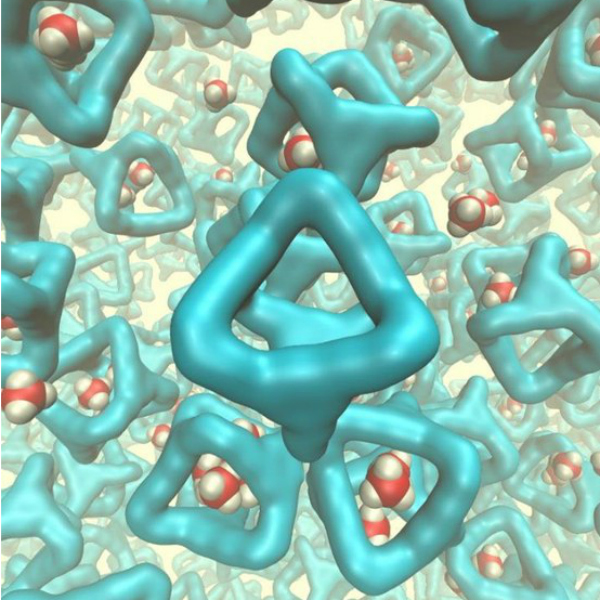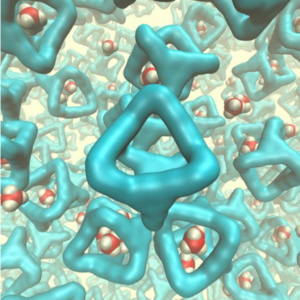This week, scientists reveal their new breakthrough whereby they successfully “developed” a “porous” liquid capable of capturing “harmful carbon emissions”. The first of its kind “porous” liquid can be used for preventing the greenhouse gas emissions from getting absorbed in the atmosphere of the earth.
The research scientists working on the said field contributed in a collaborated manner whereby the “Queen's University Belfast in UK” coordinated with their “colleagues at the University of Liverpool” and several other “international partners”. Their team work has resulted in the invention of the “new liquid” which has the capacity to “dissolve unusually large amount of gas”. This unique capacity of the liquid comes from its porous nature, whereby it traps the gas in to the “'holes' in the liquid”.
The said research result is an indication towards a future wherein the humanity could produce “more efficient and greener chemical processes”, in order to effectuate the “.procedure known as carbon capture”. The aforementioned process refers to the action of “trapping carbon dioxide from major sources” including fossil fuel power plants and storing the same into the liquids pores in order to prevent the absorption of the harmful gases into the atmosphere.
In the words of Stuart James, from the “Queen's School of Chemistry and Chemical Engineering”:
"Materials which contain permanent holes, or pores, are technologically important. They are used for manufacturing a range of products from plastic bottles to petrol”.
In fact, James adds further:
"However, until recently, these porous materials have been solids. What we have done is to design a special liquid from the 'bottom-up' - we designed the shapes of the molecules which make up the liquid so that the liquid could not fill up all the space”.
"Because of the empty holes we then had in the liquid, we found that it was able to dissolve unusually large amounts of gas”.
"These first experiments are what is needed to understand this new type of material, and the results point to interesting long-term applications which rely on dissolution of gases”.
"A few more years' research will be needed, but if we can find applications for these porous liquids they could result in new or improved chemical processes”.
"At the very least, we have managed to demonstrate a very new principle - that by creating holes in liquids we can dramatically increase the amount of gas they can dissolve”.
The said study was featured in the Nature Journal publications.
References:
http://gadgets.ndtv.com/
The research scientists working on the said field contributed in a collaborated manner whereby the “Queen's University Belfast in UK” coordinated with their “colleagues at the University of Liverpool” and several other “international partners”. Their team work has resulted in the invention of the “new liquid” which has the capacity to “dissolve unusually large amount of gas”. This unique capacity of the liquid comes from its porous nature, whereby it traps the gas in to the “'holes' in the liquid”.
The said research result is an indication towards a future wherein the humanity could produce “more efficient and greener chemical processes”, in order to effectuate the “.procedure known as carbon capture”. The aforementioned process refers to the action of “trapping carbon dioxide from major sources” including fossil fuel power plants and storing the same into the liquids pores in order to prevent the absorption of the harmful gases into the atmosphere.
In the words of Stuart James, from the “Queen's School of Chemistry and Chemical Engineering”:
"Materials which contain permanent holes, or pores, are technologically important. They are used for manufacturing a range of products from plastic bottles to petrol”.
In fact, James adds further:
"However, until recently, these porous materials have been solids. What we have done is to design a special liquid from the 'bottom-up' - we designed the shapes of the molecules which make up the liquid so that the liquid could not fill up all the space”.
"Because of the empty holes we then had in the liquid, we found that it was able to dissolve unusually large amounts of gas”.
"These first experiments are what is needed to understand this new type of material, and the results point to interesting long-term applications which rely on dissolution of gases”.
"A few more years' research will be needed, but if we can find applications for these porous liquids they could result in new or improved chemical processes”.
"At the very least, we have managed to demonstrate a very new principle - that by creating holes in liquids we can dramatically increase the amount of gas they can dissolve”.
The said study was featured in the Nature Journal publications.
References:
http://gadgets.ndtv.com/






